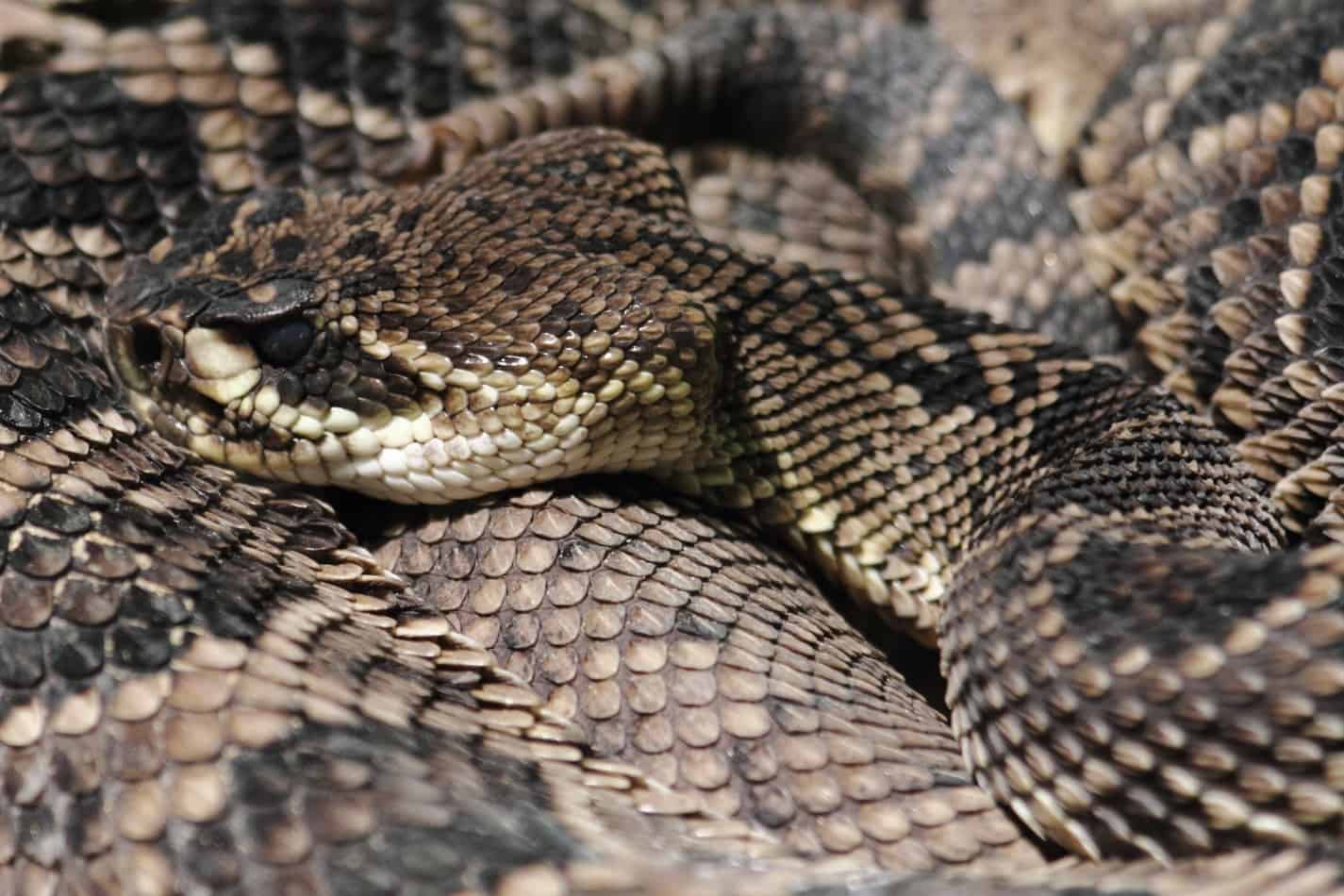How Long Do Rattlesnakes Get (And How Long Do They Take to Grow)?

Rattlesnakes: They’re North America’s claim to venomous fame. Their reputations are massive, but how big are they, really? I did some research, and here’s what I found.
How long do rattlesnakes get? Typically rattlesnakes range from three to five feet long and generally weigh about 2.5 pounds. Ambitious snakes can stretch up to seven feet. The ridge-nosed rattlesnake can be as short as 12 inches and rarely exceeds a length of two feet. The Eastern Diamondback rattlesnake can grow to eight feet long and can weigh as many as ten pounds.
Rattlesnakes come in a lot of different sizes, but how do we understand that? Why is it even important? I did some more research on rattlesnake sizes and the answers I found are intriguing.
Understanding Rattlesnake Sizes
The average rattlesnake lives 15–20 years, but, as with most species of snakes, the majority of growth takes place in a rattlesnake’s early years. Most rattlesnakes are born at approximately ten inches long. Some snakes are done growing after three or four years. Other snakes continue to grow for almost a decade. The rate of growth, much like the length itself, really depends on the rattlesnake’s representative species, environmental conditions, and eating habits.
Small rattlesnakes can be especially vicious, so it’s important to avoid them when possible. These snakes are usually young and aggressive, easy to agitate, and their venom is stronger than that of their older counterparts.
Older and larger snakes, though still dangerous (their bite is bigger and more painful than that of young snakes, and though their venom is less potent, they tend to inject more of it into their prey), tend to be more docile and easier to escape from.
Understanding the sizes of different rattlesnakes is especially important if you’re planning on purchasing one as a pet. (Yes, you can own a pet rattlesnake in 47 U.S. states!)
Small rattlesnakes call for certain accommodations in regards to food and space, as they’re very energetic and high-maintenance. They feed often on small rodents and insects and are rarely sedentary. They also require more secure tanks. Small snakes have little difficulty escaping from most enclosures, and they’re more prone to bite if they do.
Likewise, large rattlesnakes need terrariums with enough space to move around in, as too little activity can be detrimental to any snake‘s health. They might not eat as frequently as smaller rattlesnakes, but they prefer more sizeable prey, such as rabbits, ground squirrels, and gophers.
What Factors Affect Rattlesnake Size?
Rattlesnakes generally grow to fit their environment. For instance, the rattlers on the mountain near my home are relatively large, as they have many rock formations and caves to burrow in. Snakes that must dig into the ground for shelter are often short and slender.
Female rattlesnakes also tend to be shorter and lighter than males. This is typical of many animal species, but it’s worth noting that males are also proven to live in more spacious environments than females, which could pertain somewhat to the size deficit between the two sexes.
Whether you’re interested in observing rattlesnakes in the wild, avoiding them, or buying one as a pet, it can be incredibly useful to understand how long rattlesnakes can get and why. Whatever your intentions are, it’s never wise to approach a rattlesnake in nature or at home without proper knowledge and protection. Good luck!
Why Should I Care About How Big They Get?
These reptiles, known scientifically as Crotalus or Crotalidae, are notorious for their warning rattle and often fatal bite. Having lived in “rattlesnake country” (the western United States) for nearly my whole life, I have plenty of experience with these reptiles. And yet, I only recently discovered just how varied their dimensions can be. As it so happens, knowledge of common rattlesnake measurements is somewhat useful to have for a couple of reasons.
For one, the size of a rattlesnake can greatly affect its ability to strike.
As a matter of fact, rattlesnakes as a whole have been proven to be able to strike half their body length! Some rattlesnakes can strike two-thirds their length or even their full length when agitated or defensive.
Thus, a rattlesnake’s length can tell us what distance we should keep between ourselves and the snake (though it really doesn’t come recommended to be near an uncaged rattlesnake at all).
Furthermore, understanding these possible sizes can help you be more conscious when in nature. I had no idea that rattlesnakes could be so drastically small or so immense. Now, if I am ever to encounter a snake in the wild, I’ll know to be more wary, even if it’s small and seemingly harmless.
Related Questions
Does a rattlesnake’s rattle get longer as the snake ages? Interestingly enough, a rattlesnake’s rattle does get longer as it ages. Rattlesnake’s rattles are made of keratin (the same thing that makes up your hair and fingernails). Much like fingernails, the base of a snake’s rattle is actually made up of live tissue, which hardens as it grows longer and eventually sheds. Because each segment is equal to the width of a snake’s tail at the time of its formation, and a newborn snake is constantly growing, young snakes have a nicely-tapered rattle which is more sturdy than the rattles of older snakes.
What is the record rattlesnake length?The longest rattlesnake ever recorded was eight feet and three inches long. This was an Eastern Diamondback rattlesnake, which I previously mentioned as the largest known species of rattlesnake. It is extremely rare for even other Eastern Diamondbacks to grow to this length. Most Diamondbacks are five to seven feet long.
